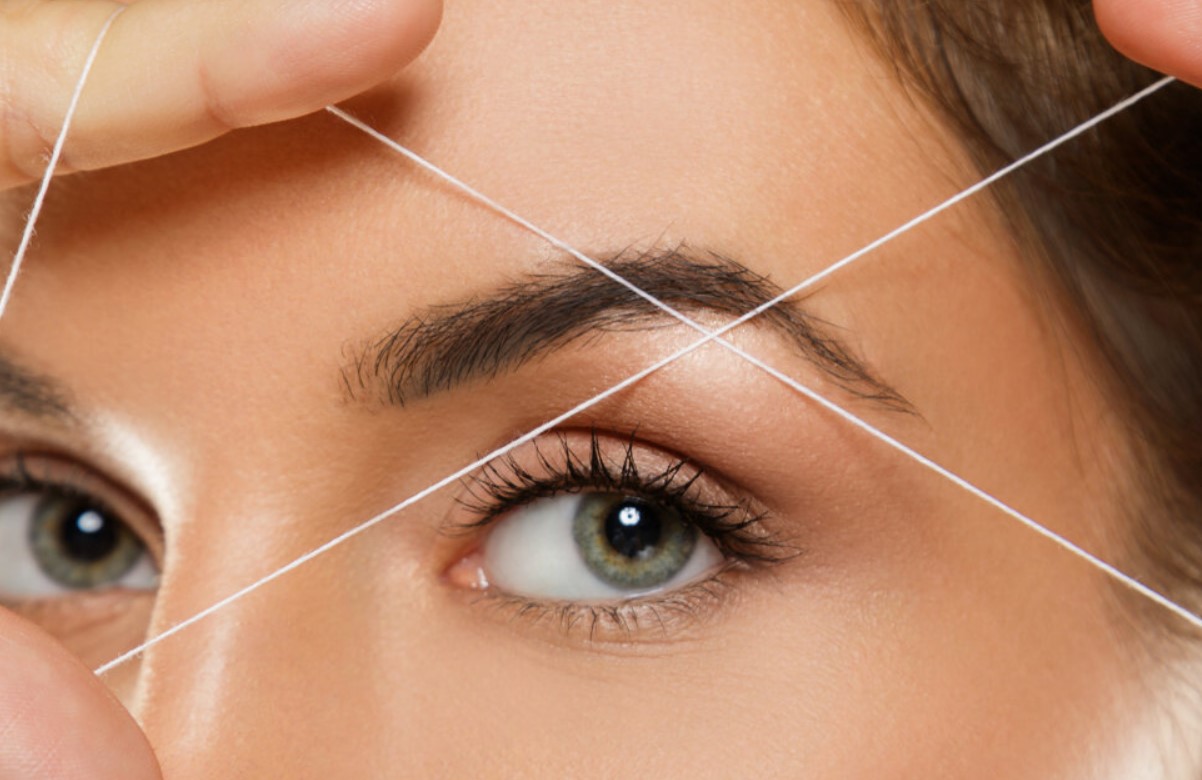Hey there, beauties! Say hello to eyebrow threading – the ancient technique that’s been revolutionizing the world of eyebrow grooming. In this comprehensive guide, we’ll dive deep into the world of eyebrow threading, answering all your burning questions and giving you the lowdown on why it might just be the solution you’ve been searching for.
What Is Eyebrow Threading?

Eyebrow threading is a method of removing unwanted hair from the follicle. It originated in ancient Eastern cultures such as India and the Middle East. Unlike waxing or tweezing, threading uses a twisted cotton thread to gently remove the hair. This method requires a skilled technician to perform the process. This method is often used on the face, including the eyebrows, upper lip, jawline, and chin.
Can You Thread Other Body Hair?
Although eyebrow threading is primarily used for shaping eyebrows, it is a versatile hair removal technique that can be applied to different parts of the body. Whether it’s upper lip, chin, or cheeks, threading is effective in removing unwanted hair from almost anywhere. However, it’s important to note that while it’s a great choice for smaller areas, it may not be the best option for larger patches of hair.
How Does Eyebrow Threading Work?
Have you ever been curious about how threading works? Threading is a hair removal technique where a thread is twisted and rolled over the skin, which entwines the hair and removes it from the root. This method is faster and more efficient than traditional plucking, and it allows for greater precision.

The Pros and Cons of Eyebrow Threading
Pros:
- Precision is achieved through threading, shaping every hair to its rightful place with great precision.
- Less Irritation: Unlike waxing, threading doesn’t involve any harsh chemicals or pulling on the skin, making it gentler and less irritating.
- Long-lasting Results: With threading, you can enjoy smooth, hair-free brows for up to four weeks.
Cons:
- Pain Factor: Let’s be real – Eyebrow threading isn’t exactly a walk in the park. While some people find it relatively painless, others may experience discomfort, especially during their first few sessions.
- Skill Required: Threading is an art form that requires skill and precision. Finding a talented technician can sometimes be a challenge.
- Not Suitable for Everyone: If you have sensitive skin or certain skin conditions, threading may not be the best option for you.
Is Eyebrow Threading Worth It?
Ah, the million-dollar question! Is all the hype surrounding eyebrow threading worth it? Well, it ultimately depends on your personal preferences and pain tolerance. If you’re looking for precise results and long-lasting smoothness, then threading might be your new best friend. However, if you’re averse to pain or have sensitive skin, you might have to explore other options.
Read Also
Tips for First-Time Eyebrow Threading
Congratulations on deciding to give eyebrow threading a try! Here are some tips to ensure your first experience goes smoothly:
- Do Your Research: Not all threading salons are created equal. Take the time to read reviews and find a reputable technician with plenty of experience.
- Communicate Clearly: Don’t be afraid to speak up and communicate your desired eyebrow shape to your technician. They’re there to help you achieve your brow goals!
- Take Pain Relief: If you’re worried about discomfort, consider taking a pain reliever like ibuprofen before your appointment to help take the edge off.
- Relax and Breathe: Remember to breathe deeply and relax during your threading session. Tensing up will only make the experience more uncomfortable.
The Process Doesn’t Hurt as Much as Waxing
Let’s discuss a topic that often comes to mind when it comes to threading – does it cause pain? To be honest, there is a possibility that you may feel some discomfort, especially if it is your first time. However, many individuals tend to choose threading over waxing because of its gentle and precise technique. Also, the pain usually subsides quickly, and the result of having beautifully shaped eyebrows makes it worth it!
Conclusion:
And there you have it, folks – everything you need to know about eyebrow threading! Whether you’re a seasoned threading pro or a newbie looking to dip your toes into the world of brow grooming, we hope this guide has been informative and helpful. So go ahead, book that threading appointment, and get ready to unleash your inner brow goddess!
FAQ’s
Threading is a precise technique for removing hair, particularly for shaping eyebrows, accomplished by pulling hairs out from the follicle using a twisted thread made of cotton or polyester. It’s renowned for its ability to produce crisp, well-defined lines and is often considered less painful and gentler on the skin in comparison to waxing or plucking. With consistent threading, there’s a tendency for the regrown hair to become finer and less dense over time.
To allow your skin to settle, avoid washing your face for 12-24 hours after threading to minimize irritation.
The disadvantages of eyebrow threading include:
Skin Redness and Irritation: Possible redness or irritation post-threading, especially for sensitive skin.
Risk of Infection: Unclean thread can introduce bacteria and cause infections.
Discomfort: Some may find the plucking process uncomfortable.
Not Suitable for Sensitive Skin: This can cause irritation for those with very sensitive skin.
Threading doesn’t promote increased hair growth; rather, it tends to have the opposite effect. Consistent threading can lead to weaker, softer, and finer hair regrowth over time. Because the hairs are removed from the root, their regrowth process may also take longer. This outcome mirrors the effects of other follicle-based hair removal methods such as waxing. Thus, you can be confident that threading won’t result in thicker or faster hair regrowth.
